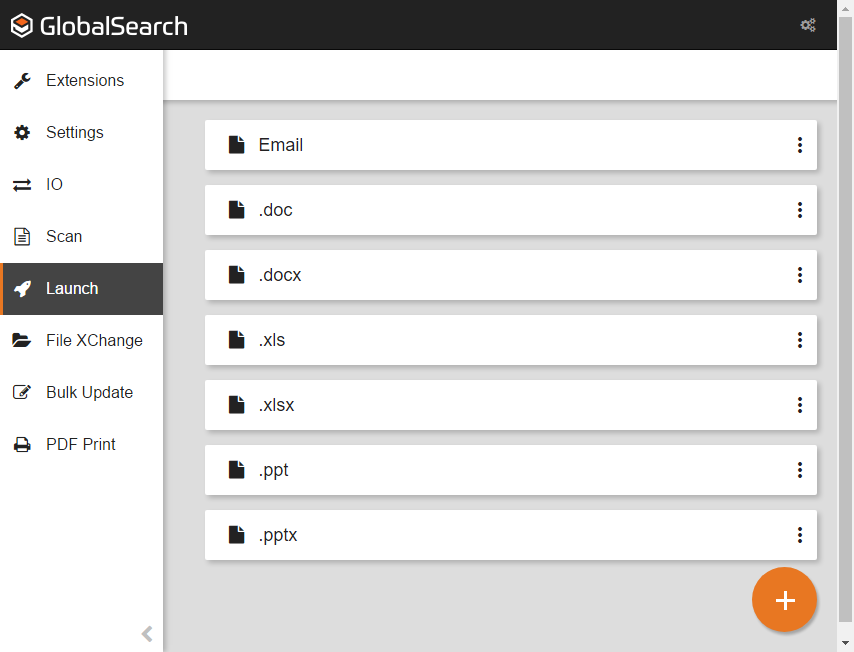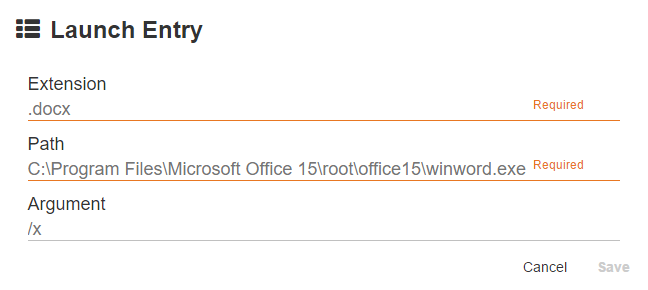Configure the Launch Table
Before the Launch feature can be used, you must first define how to open documents the user will be working with. You can define file types and their corresponding applications in the GlobalSearch Launch Table, which is accessed from the Extensions Manager interface.
Create Entries in the Launch Table
- To create entries in the Launch Table for applications on your local machine, select the Launch option in the vertical Extensions menu (this appears when Launch is enabled). Be aware that the desktop and browser-based versions of GlobalSearch use different Launch Tables, but do ship with the same default Launch Table entries.
- In the Launch interface, click the Add () button. While only certain document types can be viewed in the Document Viewer, GlobalSearch can store and launch any file type that you choose to store, whether it is a text file, spreadsheet, email, video, or CAD drawing.The default Launch Table is preconfigured for popular Microsoft Office® applications: DOC or DOCX files will open in Word® 2000-2016, XLS or XLSX files in Excel® 2000-2016, and PPT or PPTX files in PowerPoint® 2000-2016.
- In the Launch Entry dialog box that appears, enter a period and then the file extension in the Extension text box. Only if a document's file extension is provided here will it open in the designated application. Be sure to understand all of the possible extension combinations for the files you will be storing. You will need separate entries for each file type.
- In the Path text box, enter the full path and filename of the executable for your launching application. For example, .
DOCand .DOCXextensions would require the full path towinword.exein this field. - Optionally, enter necessary command-line parameters for your application in the Argument text box. Refer to your application’s documentation for details on supported command-line arguments.
- Use the Square 9-specific argument
/square9_manual_monitorto launch documents in Manual Monitoring mode and display the Launch Queue. - Click Save and the file type will be mapped for use with Launch Document.
- After configuring settings for a file type, it is a good idea to launch a document to test your Launch profile.
Example: Entry for Adobe Acrobat® PDF files.
|
, multiple selections available,

